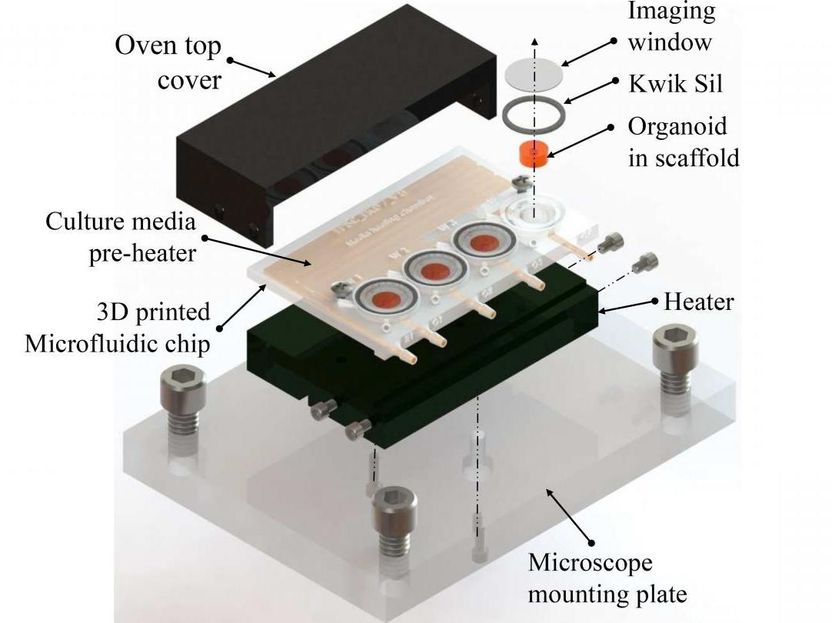New method to performance-enhancing drugs
While the world's best athletes competed during last month's winter Olympics, doctors and scientists were waging a different battle behind the scenes to make sure no one had an unfair advantage from banned performance-enhancing drugs (PEDs). Now, for the first time, researchers have unveiled a new weapon — a test for doping compounds that is a thousand times more sensitive than those used today.
"How much of a drug someone took or how long ago they took it are beyond the analyst's control. The only thing you can control is how sensitive your method is," said Daniel Armstrong, Ph.D., who led the team. "Our goal is to develop ultra-sensitive methods that will extend the window of detection, and we have maybe the most sensitive method in the world."
Hongyue Guo, a graduate student in Armstrong's lab at the University of Texas at Arlington, explained that the new strategy is a simple variation on a common testing technique called mass spectrometry (MS). The International Olympic Committee, the U.S. Anti-Doping Agency and others routinely use MS to ensure athletes are "clean." MS separates compounds by mass, or weight, allowing scientists to determine the component parts of a mixture. In the case of PEDs, technicians use the method to find the bits left over in blood, urine or other body fluids after the body breaks the dopants down.
Because some of the pieces, or metabolites, are small and have a negative charge, they may not produce a signal strong enough for the instrument to detect, Armstrong explained —- especially in the case of stimulants, which the body rapidly breaks down. Stimulants like amphetamine, or "speed," increase alertness and reduce an athlete's sense of fatigue.
The method Armstrong's lab has pioneered, called paired ion electrospray ionization (PIESI, pronounced "PIE-zee"), gathers several of those drug bits together, making them more obvious to the detector.
So far, Guo has used PIESI to detect different kinds of steroids and stimulants, as well as alcohol. That last one might not seem a likely choice for athletes looking to get an edge, but Armstrong explained that in shooting sports, alcohol and other depressants can help steady small muscle movements. Guo has demonstrated that the technique is often sensitive enough to detect one part per billion of the PED metabolite in urine, which he said is up to 1,000 times better than existing methods.
Testing laboratories wouldn't need to purchase new equipment to get PIESI's advantages, according to Guo. The new method only requires adding one ingredient to existing MS procedures, and Guo noted that the chemical is already commercially available and inexpensive. Today is the first time anyone has reported using PIESI on banned dopants, but Armstrong said now that the information is out there, he expects anti-doping agencies to quickly get on board.
"PIESI is going to be useful in so many different areas," Armstrong said. Already, it's being used to detect compounds crucial to human health such as phospholipids and pesticides and herbicides, as well as other environmental pollutants. In some cases, he noted, PIESI is 100,000 times more sensitive than other detection methods.
Topics
Organizations
Other news from the department science

Get the analytics and lab tech industry in your inbox
By submitting this form you agree that LUMITOS AG will send you the newsletter(s) selected above by email. Your data will not be passed on to third parties. Your data will be stored and processed in accordance with our data protection regulations. LUMITOS may contact you by email for the purpose of advertising or market and opinion surveys. You can revoke your consent at any time without giving reasons to LUMITOS AG, Ernst-Augustin-Str. 2, 12489 Berlin, Germany or by e-mail at revoke@lumitos.com with effect for the future. In addition, each email contains a link to unsubscribe from the corresponding newsletter.
Most read news
More news from our other portals
Last viewed contents

The Number One of Enterobacteria Deciphered - Genome of the Escherichia coli type strain finally sequenced — DNA includes potentially pathogenic segments
























































